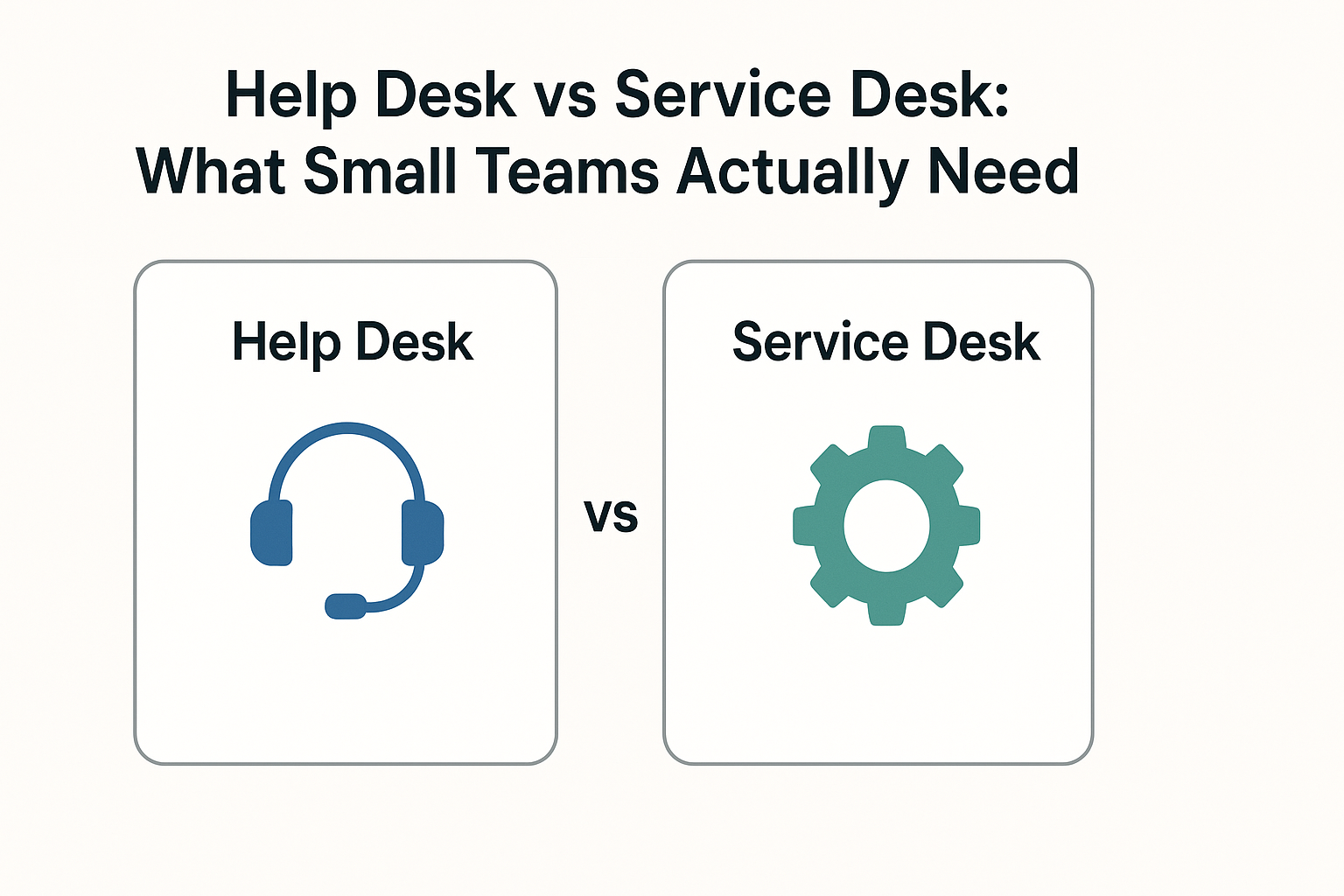If you are comparing help desk vs service desk, you are probably deciding how much process and tooling your small team really needs. This guide gives you clear definitions without the jargon, practical differences that affect daily work, and a simple decision path so you can choose with confidence.
Definitions without the jargon
Both models support customers, yet they grew up in different contexts. A help desk focuses on answering questions and fixing issues fast. A service desk takes a broader, ITIL-style view that adds service requests, change control, and catalog workflows.
Where the terms get tangled
Vendors often blend the words to appear complete. For small SaaS teams, that blur creates confusion and bloat. Use the simpler lens: do we mostly resolve customer questions by email, or do we also manage internal IT services, changes, and assets?
Key differences that matter for startups
These are the practical gaps you will feel in a lean team.
Scope and process
- Help desk: inbox-to-resolution. Triage, assignment, saved replies, light routing, simple SLAs.
- Service desk: adds service catalogs, approvals, change management, incident/problem processes, and asset links.
Complexity and ownership
- Help desk fits a product support team that partners with engineering as needed.
- Service desk is better when you own internal IT services and must coordinate approvals or changes across teams.
Cost and admin time
- Help desk tools are faster to set up and cheaper to run.
- Service desk platforms can be powerful, yet require ongoing admin and process design.
Help desk vs service desk for small teams
A clear choice saves you money and time.
Signs you only need a help desk
- Customers contact you mostly by email about using or buying the product
- You solve issues with knowledge articles, saved replies, and simple escalations
- You measure first reply and resolution time, not change windows or CAB approvals
If this sounds familiar, start with a focused help desk. You can set it up quickly following our one-day plan: set up a help desk in one day. For comparisons with shared inboxes, see shared inbox vs help desk.
Signals you might need a service desk
- You run internal IT for a growing company and must track hardware or access
- You schedule changes with approvals and need audit trails
- You publish a service catalog where employees request new software or access
Migration path from shared inbox to help desk
Move in a day, then add guardrails over a week.
One-day setup
- Connect your support address to your help desk
- Create 6 to 10 saved replies for common questions
- Add light routing rules and a simple, public email template for updates
First-week guardrails
- Define priority levels and escalation rules
- Publish a basic metrics view for first reply and resolution
- Train agents with a one-page cheat sheet and a daily calibration
For deeper setup help, use our practical post on help desk metrics for small teams. If you want pricing info while you compare tools, here is our pricing page.
When a service desk is the right call
Some teams truly need the extra process.
Choose a service desk if
- You manage change approvals and post-incident reviews
- You track assets and configuration items
- You deliver multiple internal services with formal request flows
If your support team is fewer than 25 agents and you do not run internal IT, a help desk remains the simplest and most cost-effective option. You can still borrow incident and postmortem habits without adopting the entire ITIL stack.
Help desk vs service desk: quick comparison
- Goal
Help desk: resolve end-user issues quickly.
Service desk: manage services end to end. - Workflows
Help desk: triage, assign, reply, escalate.
Service desk: add requests, change control, approvals, problem management. - Setup speed
Help desk: hours.
Service desk: days to weeks. - Who it fits
Help desk: small product teams serving customers.
Service desk: IT teams serving employees and internal systems.
What to measure after you choose
- First reply and resolution time
- Customer satisfaction
- Backlog trend and reopen rate
- Escalation volume to ensure handoffs are smooth
These basics tell you if the choice works for your team and your customers.
Conclusion
The help desk vs service desk decision comes down to scope. Most small SaaS teams need a help desk that keeps email support fast, measurable, and sane. If you also manage internal IT services and changes, a service desk can help, but expect more process and admin. Start lean, then add only what your team will use.
Start your free 14 day trial to get a focused help desk with clean routing, AI-assisted replies, and simple escalation built for small teams.
